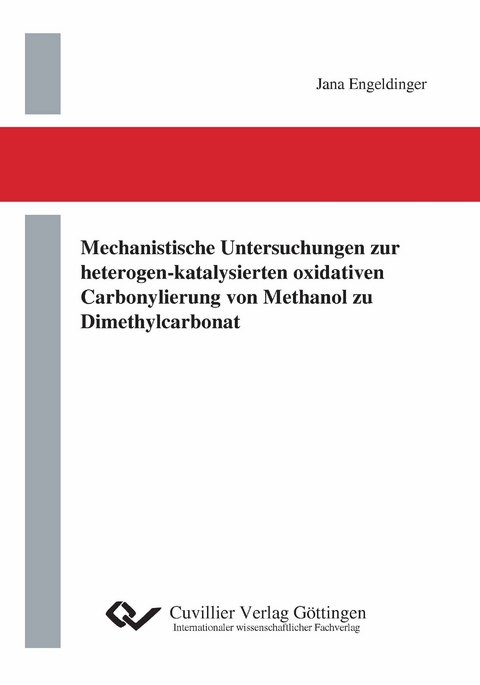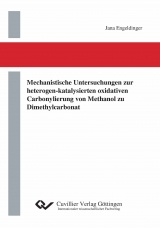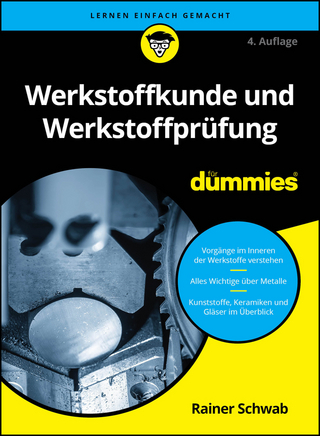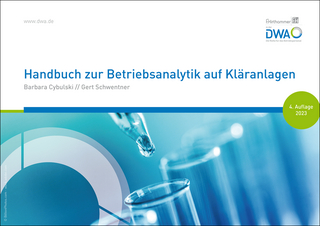Mechanistische Untersuchungen zur heterogen-katalysierten oxidativen Carbonylierung von Methanol zu Dimethylcarbonat
Seiten
2012
|
1., Aufl.
Cuvillier, E (Verlag)
978-3-95404-169-5 (ISBN)
Cuvillier, E (Verlag)
978-3-95404-169-5 (ISBN)
- Titel ist leider vergriffen;
keine Neuauflage - Artikel merken
Für die Mechanismus-Aufklärung der heterogen-katalysierten oxidativen Carbonylierung von Methanol (MeOH) zu Dimethylcarbonat (DMC) an Cu-haltigen Y-Zeolithen wurde eine neuartige operando DRIFTS/UV-vis-DRS/MS Methodenkopplung entwickelt und eingesetzt, mit der simultane Informationen bezüglich der an der Katalysatoroberfläche adsorbierten Spezies und ihrer Veränderungen während der Reaktion (DRIFTS) sowie Veränderungen des Oxidationszustandes und der Koordinationssphäre der katalytisch aktiven Cu-Spezies (UV-Vis-DRS) erhältlich sind, wobei gleichzeitig die Analyse der gasförmigen Produkte mittels MS erfolgt.
Die Wechselwirkung der Katalysatoren mit den verschiedenen Reaktanden und Reaktand-Mischungen (O2, CO, CO/O2, MeOH/O2, MeOH/CO, MeOH/CO/O2) wurde im Detail untersucht. Durch die Verwendung von 16O2/18O2- und 12CO/13CO-haltigen Gasmischungen konnte anhand des transienten Verlaufs des Isotopenaustauschs in Edukten und Produkten zwischen aktiven und nicht aktiven Spezies unterschieden werden.
DMC wird über Monodentat-Monomethylcarbonat (MMC) als Intermediat gebildet, welches durch Wechselwirkung von am selben Cu+-Zentrum adsorbiertem Methoxid und CO entsteht und mit Methanol zu DMC weiterreagiert. Der erforderliche Oxidationsschritt zur MMC-Bildung erfolgt unter Beteiligung von Gittersauerstoff aus CuOx-Spezies, während der dabei partiell reduzierte Katalysator durch Gasphasensauerstoff re-oxidiert wird. Adsorbierte Bidentat-MMC-Spezies sind inaktiv. Unselektive Oxidationsreaktionen von MeOH und CO führen zur Bildung von Nebenprodukten wie Methylformiat, Dimethoxymethan und CO2.
For elucidating the reaction mechanism of the oxidative gas phase carbonylation of methanol (MeOH) to dimethyl carbonate (DMC) over CuY zeolites a new operando DRIFTS/UV-Vis-DRS/MS setup was developed and used enabling simultaneous information concerning the nature of adsorbates and their changes during reaction (DRIFTS) and the changes of oxidation state and coordination sphere of the catalytically active Cu species (UV-Vis-DRS) where the gaseous products are analyzed at the same time by MS.
The interaction of the catalysts with different reactants and reactant mixtures (O2, CO, CO/O2, MeOH/O2, MeOH/CO, MeOH/CO/O2) was studied in detail. By using 16O2/18O2 and 12CO/13CO containing gas mixtures the transient isotopic exchange of reactants and products were monitored which allowed the discrimination between active and spectator species.
DMC is produced via a monodentate monomethyl carbonate (MMC) species as intermediate, forming by interaction of adsorbed methoxide and CO at the same Cu+ site, which consecutively reacts with methanol to DMC. Lattice oxygen supplied by CuOx species is involved in the required oxidation step for DMC formation while the gas phase oxygen is needed to reoxidize the partially reduced catalyst. Adsorbed bidentate MMC species were found to be inactive. Unselective oxidation reactions of MeOH and CO cause the formation of byproducts like methyl formate, dimethoxy methane and CO2.
Die Wechselwirkung der Katalysatoren mit den verschiedenen Reaktanden und Reaktand-Mischungen (O2, CO, CO/O2, MeOH/O2, MeOH/CO, MeOH/CO/O2) wurde im Detail untersucht. Durch die Verwendung von 16O2/18O2- und 12CO/13CO-haltigen Gasmischungen konnte anhand des transienten Verlaufs des Isotopenaustauschs in Edukten und Produkten zwischen aktiven und nicht aktiven Spezies unterschieden werden.
DMC wird über Monodentat-Monomethylcarbonat (MMC) als Intermediat gebildet, welches durch Wechselwirkung von am selben Cu+-Zentrum adsorbiertem Methoxid und CO entsteht und mit Methanol zu DMC weiterreagiert. Der erforderliche Oxidationsschritt zur MMC-Bildung erfolgt unter Beteiligung von Gittersauerstoff aus CuOx-Spezies, während der dabei partiell reduzierte Katalysator durch Gasphasensauerstoff re-oxidiert wird. Adsorbierte Bidentat-MMC-Spezies sind inaktiv. Unselektive Oxidationsreaktionen von MeOH und CO führen zur Bildung von Nebenprodukten wie Methylformiat, Dimethoxymethan und CO2.
For elucidating the reaction mechanism of the oxidative gas phase carbonylation of methanol (MeOH) to dimethyl carbonate (DMC) over CuY zeolites a new operando DRIFTS/UV-Vis-DRS/MS setup was developed and used enabling simultaneous information concerning the nature of adsorbates and their changes during reaction (DRIFTS) and the changes of oxidation state and coordination sphere of the catalytically active Cu species (UV-Vis-DRS) where the gaseous products are analyzed at the same time by MS.
The interaction of the catalysts with different reactants and reactant mixtures (O2, CO, CO/O2, MeOH/O2, MeOH/CO, MeOH/CO/O2) was studied in detail. By using 16O2/18O2 and 12CO/13CO containing gas mixtures the transient isotopic exchange of reactants and products were monitored which allowed the discrimination between active and spectator species.
DMC is produced via a monodentate monomethyl carbonate (MMC) species as intermediate, forming by interaction of adsorbed methoxide and CO at the same Cu+ site, which consecutively reacts with methanol to DMC. Lattice oxygen supplied by CuOx species is involved in the required oxidation step for DMC formation while the gas phase oxygen is needed to reoxidize the partially reduced catalyst. Adsorbed bidentate MMC species were found to be inactive. Unselective oxidation reactions of MeOH and CO cause the formation of byproducts like methyl formate, dimethoxy methane and CO2.
| Sprache | deutsch |
|---|---|
| Einbandart | Paperback |
| Themenwelt | Naturwissenschaften ► Chemie |
| Schlagworte | CuY zeolites • CuY-Zeolithe • Dimethylcarbonat • Dimethyl carbonate • Operando DRIFTS/UV-Vis-DRS/MS • Operando spectroscopy • Operando-Spektroskopie • Operando-SSITKA/DRIFTS/UV-Vis-DRS/MS • Oxidative Carbonylation • Oxidative Carbonylierung • reaction mechanism • Reaktionsmechanismus |
| ISBN-10 | 3-95404-169-3 / 3954041693 |
| ISBN-13 | 978-3-95404-169-5 / 9783954041695 |
| Zustand | Neuware |
| Haben Sie eine Frage zum Produkt? |
Mehr entdecken
aus dem Bereich
aus dem Bereich
Buch (2024)
Deutsche Vereinigung für Wasserwirtschaft, Abwasser und … (Verlag)
52,00 €




